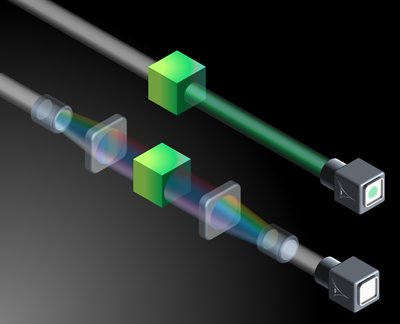Invisibility Cloak: New Technology Makes Real-World Objects Invisible

A group of researchers at Montreal's National Institute of Scientific Research developed a spectral invisibility cloak, a device that might soon make real-world objects invisible.
The idea of rendering objects invisible sounds pretty far-fetched, but let us assure you, this is not some fictional invisibility cloak like the one shown in Harry Potter movies, but a functional device that leverages the physics of how light makes an object visible.
Most sources of visible light, like the sun, contain many frequencies or colors of light waves. When these so-called broadband light waves interact with an object, a person is able to “see” the object. For instance, when sunlight shines on a blue-colored car, only blue light frequency is reflected, helping the observer see the vehicle, while all other colors simply pass through the medium.
Due to the nature of this interaction, engineers and scientists have long known that in order to reverse the process and make an object “invisible,” the color of light waves hitting the object has to be manipulated. They tried applying that theory but were not able to manipulate broadband light until researchers at Montreal's National Institute of Scientific Research came up with the new device.
The novel spectral cloak, as the team described, transforms selected light frequency to other colors, so that it passes through the object without being reflecting to the observer. Once that happens, the object becomes invisible to the viewer.
The team uses specially designed filters to convert light frequencies into those that would go undisturbed through the object. As soon as this propagation occurs, the filter restores the light wave to its original state.
“Our work represents a breakthrough in the quest for invisibility cloaking,” José Azaña, one of the researchers involved in the work, said in a statement. “We have made a target object fully invisible to observation under realistic broadband illumination by propagating the illumination wave through the object with no detectable distortion, exactly as if the object and cloak were not present.”
While the team has demonstrated the working of the new tech, they still have to make a number of improvements to make it good enough for seamless real-world invisibility. At present, the spectral cloak works only from one direction, which means the viewer has to follow the path of light and look through the first filter to see the object. However, the team believes the technique could even work when the broadband light hits an object from all directions.
That said, with further developments, the tech could be leveraged for a range of purposes and not just making objects invisible. This could include securing telecommunication systems which use broadband waves as data signals for information transfer or safeguarding data transmitted over fiber optic lines.
The work titled, "Full-field broadband invisibility through reversible wave frequency-spectrum control," was published June 28 in the journal Optica.
© Copyright IBTimes 2025. All rights reserved.



















